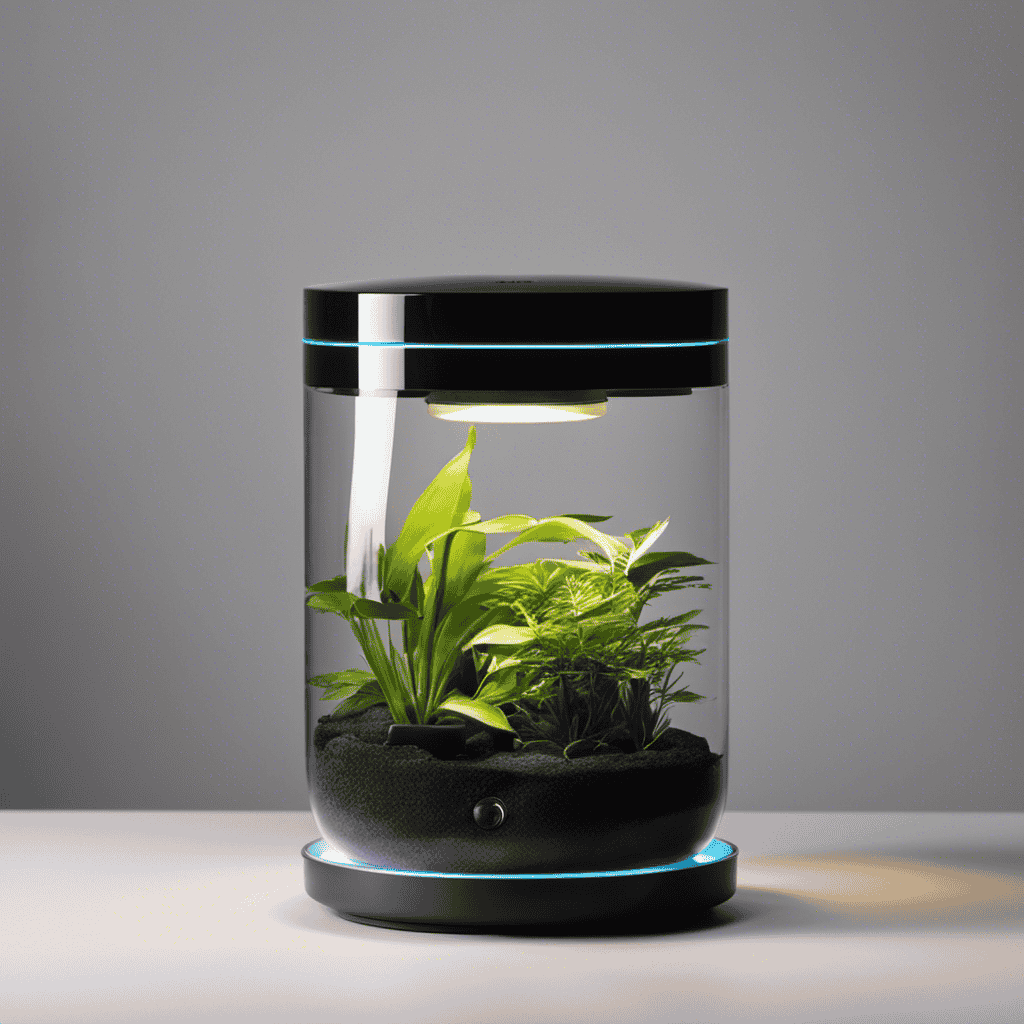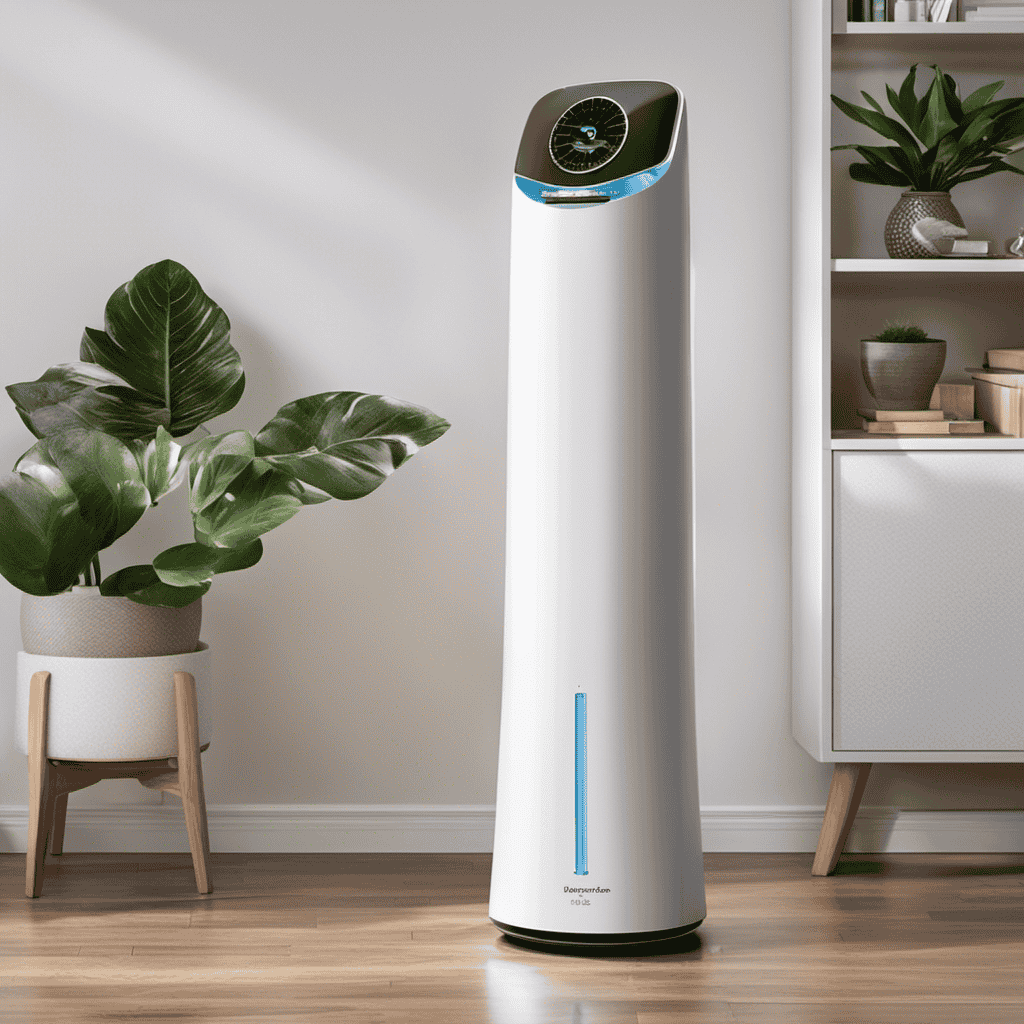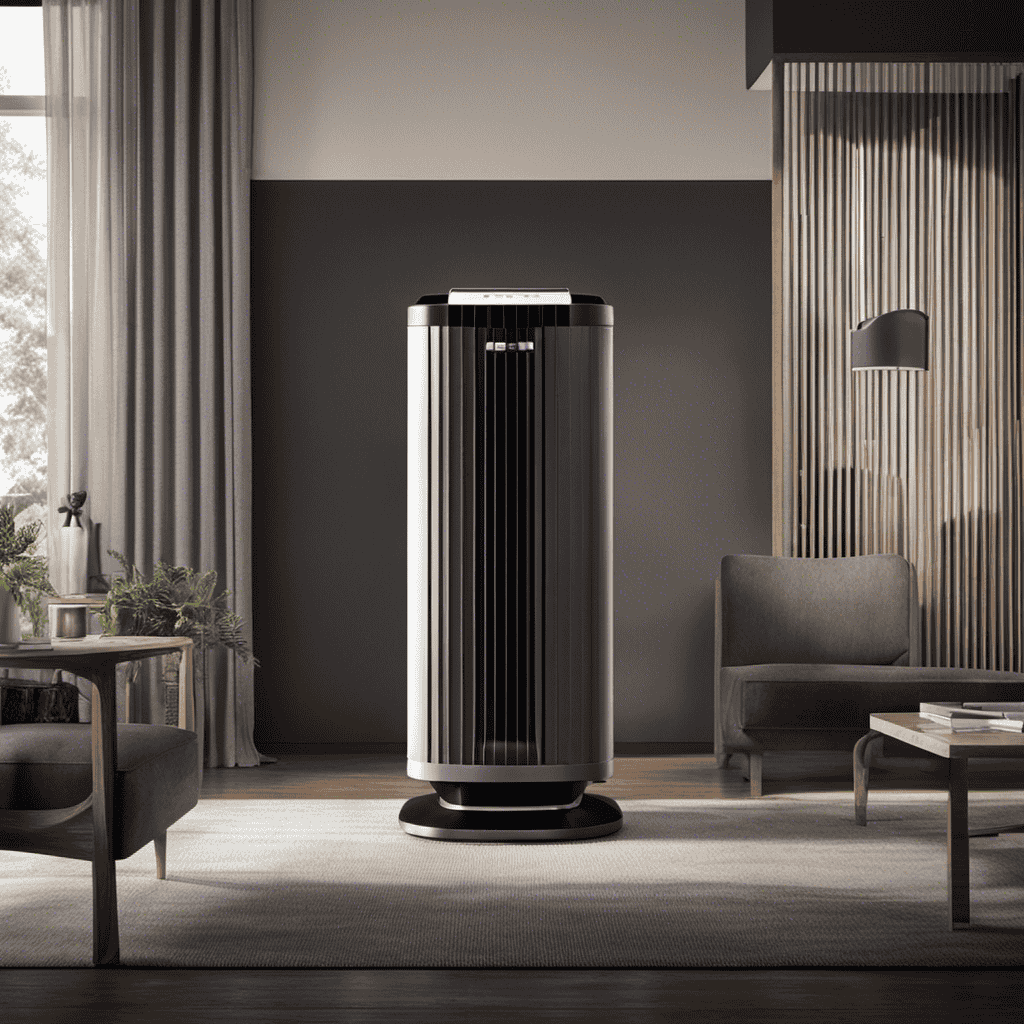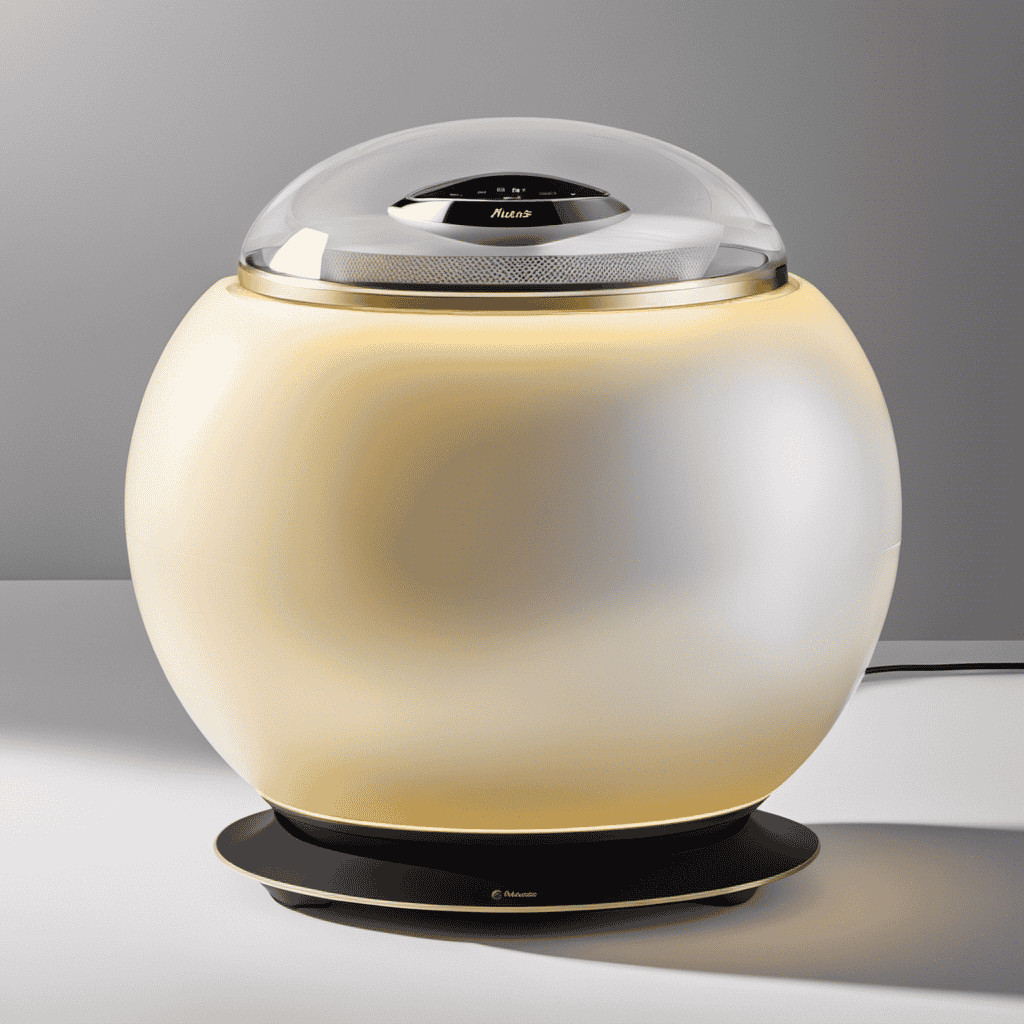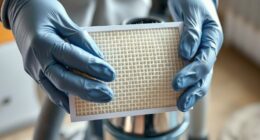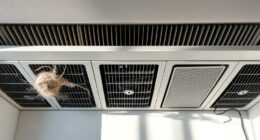Hey there! Were you aware that indoor air can be up to five times more polluted than outdoor air? That’s why I’ve put together a step-by-step guide to help you create a simple air purifier.
In this article, I’ll walk you through:
- Gathering the necessary materials
- Understanding the basic principles of air purification
- Choosing the right fan
- Building the filter system
- Assembling the components
- Testing and adjusting the performance
- Maintaining and cleaning your homemade air purifier.
So, let’s get started and breathe cleaner air!
Key Takeaways
- Making a homemade air purifier allows for customization, cost-saving, and control over maintenance and filter replacement.
- The basic principles of air purification involve filtration, ionization, and ozone generation as key mechanisms, with HEPA filtration and activated carbon adsorption being effective methods.
- Regular maintenance and cleaning of homemade air purifiers are important for optimal performance and longevity.
- Effective purification techniques include vacuuming or wiping down pre-filters, regular cleaning and replacement of HEPA filters, and checking and cleaning carbon filters to eliminate odors and hazardous substances.
Gather the Necessary Materials
To make a simple air purifier, you’ll need to gather the necessary materials.
One of the most important steps in creating your own DIY air purifier is selecting the right air filtration options. There are several options available, such as HEPA filters, activated carbon filters, and ionizers.
HEPA filters are highly effective at removing small particles like pollen, dust mites, and pet dander.
Activated carbon filters are great for eliminating odors and capturing volatile organic compounds (VOCs).
Ionizers use charged particles to attract and remove airborne contaminants.
The benefits of making your own air purifier are numerous. It allows you to customize the purifier to your specific needs, saves money compared to buying a commercial unit, and gives you control over the maintenance and replacement of filters.
Understand the Basic Principles of Air Purification
When it comes to air purification, understanding the mechanisms behind how air purifiers work is crucial. The three key mechanisms include filtration, ionization, and ozone generation.
Each mechanism plays a vital role in effectively purifying the air and removing pollutants. Additionally, it is important to know the most effective purification techniques, such as HEPA filtration and activated carbon adsorption, as well as the key factors that affect the overall purification process, such as room size, airflow rate, and pollutant concentration.
Air Purifier Mechanisms
The air purifier uses a fan to circulate the air and a filter to trap pollutants.
Maintaining your air purifier is crucial for optimal performance and longevity. Regular maintenance includes cleaning or replacing the filters, checking the fan for any debris, and ensuring proper ventilation.
By properly maintaining your air purifier, you can enjoy the many benefits of air purification. Air purifiers help remove harmful pollutants such as dust, pollen, pet dander, and smoke from the air, creating a cleaner and healthier environment. They also reduce the risk of respiratory issues and allergies, improve indoor air quality, and provide relief for those with asthma or other respiratory conditions.
With regular maintenance, your air purifier will continue to effectively clean the air, ensuring a healthier and more comfortable living space.
Effective Purification Techniques
Regularly cleaning or replacing the filters in your air purifier helps maintain its effectiveness and ensures a healthier living space. Here are some air purifier maintenance tips and cost-effective purification methods to consider:
- Vacuum or wipe down the pre-filter: This removes larger particles and prolongs the lifespan of the main filter.
- Clean or replace the HEPA filter: High-Efficiency Particulate Air (HEPA) filters trap small particles like dust, pollen, and pet dander. Cleaning or replacing them regularly ensures optimal performance.
- Check and clean the carbon filter: Carbon filters absorb odors and chemicals. Cleaning or replacing them helps eliminate unpleasant smells and hazardous substances from the air.
By following these maintenance tips and using cost-effective purification methods, you can improve the efficiency of your air purifier and create a healthier indoor environment.
Now let’s explore the key purification factors that contribute to clean and fresh air.
Key Purification Factors
To maintain a healthy indoor environment, you should focus on key purification factors.
Air quality is of utmost importance, as it directly affects our well-being. Indoor pollutants, such as dust, pet dander, mold spores, and volatile organic compounds (VOCs), can lead to respiratory issues and allergies.
To improve air quality, consider implementing these key purification factors.
Firstly, proper ventilation is crucial. Ensure that your home has adequate air circulation by opening windows or using exhaust fans.
Secondly, invest in high-quality air filters for your HVAC system. These filters can trap a wide range of airborne particles, reducing indoor pollutants significantly.
Lastly, regular cleaning is essential, as it helps remove dust and other pollutants that settle on surfaces.
Choose the Right Fan for Your Air Purifier
When choosing the right fan for your air purifier, it’s important to consider the size and power requirements. A fan that is too small may not provide enough airflow to effectively purify the air, while a fan that is too large may consume unnecessary power and create excessive noise.
Here are some key factors to consider:
-
Fan speed control: Look for a fan that allows you to adjust the speed according to your needs. This feature is important because different purification settings may require different airflow rates.
-
Noise reduction techniques: Choose a fan that incorporates noise reduction techniques such as blade designs, motor enclosures, and vibration dampening materials. These features help to minimize noise levels and ensure a quiet operation.
-
Efficiency: Opt for a fan that offers high efficiency in terms of power consumption. This will not only help reduce energy costs but also minimize the environmental impact.
Considering these factors will help you select the right fan for your air purifier, ensuring optimal performance and a pleasant air purification experience.
Build the Filter System
When it comes to building the filter system for your air purifier, there are a few key points to consider.
First, you’ll want to make sure you select the right filters for your specific needs. I’ll provide some tips on how to choose the most effective filters for removing pollutants from your indoor air.
Additionally, I’ll give you an overview of the assembly instructions so you can easily put together your filter system.
And finally, I’ll cover some common troubleshooting issues you may encounter and how to resolve them.
Filter Selection Tips
Choose the right filter for your air purifier by considering factors like the size of the particles it can capture and the specific pollutants you want to remove. When it comes to selecting the best air purifiers, the filter plays a crucial role in ensuring its efficiency.
Here are some tips to help you make an informed decision:
- Look for HEPA (High Efficiency Particulate Air) filters, which are capable of capturing particles as small as 0.3 microns.
- Consider activated carbon filters, which are effective in removing odors, gases, and VOCs (volatile organic compounds).
- If you have allergies or asthma, consider filters with an antimicrobial coating to inhibit the growth of mold, bacteria, and viruses.
Choosing the right filter for your air purifier is essential to maximize its performance and provide you with clean, healthy air. Now that you have selected the perfect filter, let’s move on to the assembly instructions overview.
Assembly Instructions Overview
Now that you’ve got the perfect filter, let’s take a look at the assembly instructions overview.
Building your own air purifier is a great way to ensure clean air in your home. To begin, gather all the necessary components, including a fan, a filter, and a housing.
Start by attaching the fan to the housing, making sure it is securely fastened. Next, place the filter inside the housing, ensuring a tight fit.
Connect the power source to the fan and test the air purifier to ensure it is working properly. Remember to regularly clean or replace the filter to maintain its efficiency. Additionally, you can explore DIY air purifier modifications to enhance its performance.
Now that we’ve covered the assembly, let’s move on to troubleshooting common issues.
Troubleshooting Common Issues
If you’re experiencing any problems, you can check the power source and ensure it’s properly connected. Troubleshooting techniques can help you identify and resolve common problems with your air purifier.
Here are some techniques to consider:
-
Check the filter: A clogged or dirty filter can hinder the performance of your air purifier. Clean or replace the filter as needed.
-
Inspect the fan: If the fan is not working properly, it may be causing poor airflow. Make sure the fan is clean and free from obstructions.
-
Verify the settings: Double-check the settings on your air purifier to ensure it is set to the appropriate mode and fan speed.
Assemble the Air Purifier Components
To assemble the air purifier, you’ll need to gather all the necessary components.
First, ensure you have the air purifier filter, a fan, and a power source. The filter is crucial for capturing pollutants and allergens in the air.
Next, choose a fan that suits the size of the room you intend to purify. A small desk fan may suffice for a small bedroom, while a larger tower fan may be necessary for a living room.
Finally, make sure you have a power source, whether it’s a wall outlet or batteries for a portable air purifier.
DIY air purifier options are a great way to save money and maintain clean air in your home.
Regular air purifier maintenance, such as cleaning or replacing the filter, will ensure optimal performance and clean air for you and your family.
Test and Adjust the Air Purifier’s Performance
Ensure you adjust the fan speed and test the air purifier’s performance to ensure it is effectively removing pollutants and allergens from your home. Testing the performance of your homemade air purifier is crucial to ensure its efficiency.
Here are some recommended test methods and performance evaluation techniques:
-
Conduct a smoke test: Light a match or a candle near the air purifier and observe how quickly the smoke is cleared.
-
Measure the air quality: Use an air quality monitor to assess the levels of pollutants and allergens before and after using the air purifier.
-
Check the airflow: Use an anemometer to measure the airflow coming out of the air purifier, ensuring it is sufficient for your room size.
By regularly testing and adjusting the performance of your homemade air purifier, you can be confident that it is effectively improving the air quality in your home.
Now, let’s move on to the next section and learn how to maintain and clean your homemade air purifier.
Maintain and Clean Your Homemade Air Purifier
Once you’ve built your homemade air purifier, it’s important to regularly clean and maintain it for optimal performance. Proper maintenance will ensure that your air purifier continues to filter out pollutants effectively. Here are some cleaning methods and maintenance tips to keep in mind:
| Cleaning Methods | Maintenance Tips |
|---|---|
| Vacuum the filters | Check and replace filters |
| Clean the fan blades | Dust off the exterior |
| Wipe down the housing | Check for any damage or leaks |
| Sanitize the unit | Inspect electrical components |
| Replace activated charcoal | Clean the air intake vents |
Regularly vacuuming the filters will remove dust and debris, allowing the air purifier to function more efficiently. Cleaning the fan blades will prevent any buildup that can impede airflow. Wiping down the housing will keep the unit looking clean and presentable. Sanitizing the unit with a mild disinfectant will help eliminate any bacteria or odors. It’s also important to check and replace filters as needed to maintain optimal performance. Finally, inspect the electrical components and air intake vents for any signs of damage or blockages. By following these cleaning methods and maintenance tips, you can ensure that your homemade air purifier functions effectively for a long time.
Frequently Asked Questions
What Are Some Alternative Materials That Can Be Used for the Filter System?
Some alternative materials for the filter system include activated carbon and HEPA filters. These materials are effective in removing pollutants and allergens from the air, ensuring cleaner and healthier indoor air quality.
Can I Use a Different Type of Fan for My Air Purifier?
Yes, you can use a different type of fan for your air purifier. Different fan types have varying compatibility with air purifier systems, so it’s important to choose one that matches your needs.
How Often Should I Clean the Filter System of My Homemade Air Purifier?
I clean the filter system of my homemade air purifier regularly to ensure optimal performance. Regular maintenance not only improves air quality but also extends the lifespan of the purifier. Alternative cleaning methods can be used for efficient filter maintenance.
Can I Use Essential Oils in My Homemade Air Purifier to Add Fragrance to the Air?
Yes, you can use essential oils in your homemade air purifier to add fragrance to the air. When choosing essential oils for air purification, consider their antimicrobial properties and select scents that promote relaxation and clean air.
What Is the Recommended Room Size for the Air Purifier to Be Effective?
The recommended room size for optimal air purifier effectiveness varies depending on the model. It’s important to consider the Clean Air Delivery Rate (CADR) and match it to the square footage of your space for efficient purification.
Can I Use Natural Methods to Make My Own Air Purifier?
Yes, you can create your own air purifier using nature fresh air purifier. Natural methods like using plants such as spider plants, aloe vera, and peace lilies can help improve indoor air quality. Additionally, keeping your home well-ventilated and using natural deodorizers like baking soda can further purify the air.
Conclusion
In conclusion, creating a homemade air purifier is a breeze! With just a few simple materials and a bit of know-how, you can transform your space into a pristine oasis of clean air.
By following the step-by-step instructions in this article, you’ll be amazed at the powerful results. Say goodbye to dust, allergens, and pollutants as your DIY air purifier works its magic.
So go ahead, take a deep breath, and enjoy the fresh air like never before!
